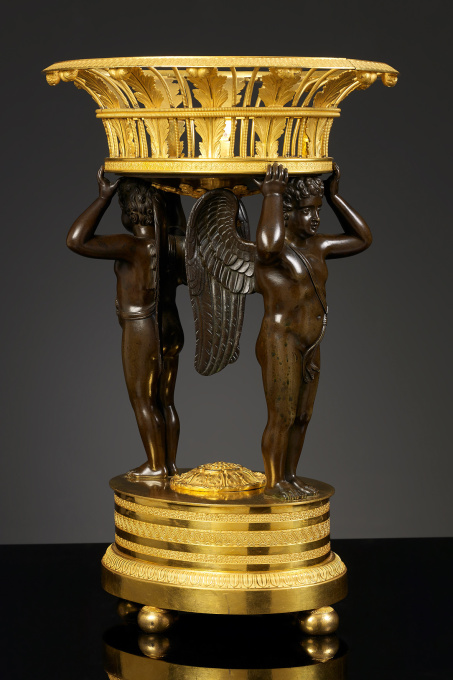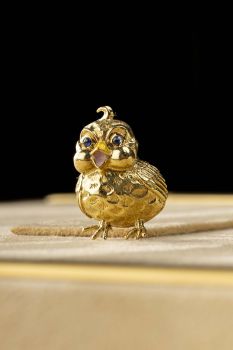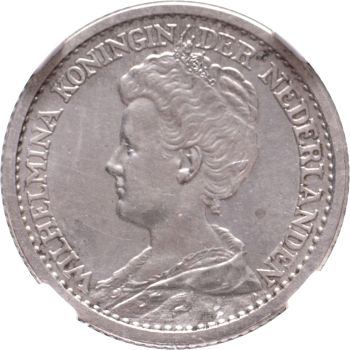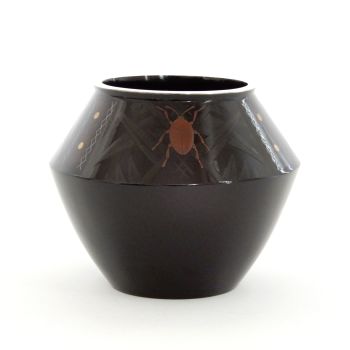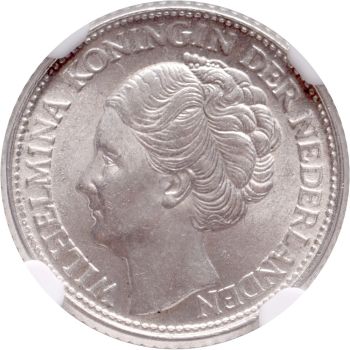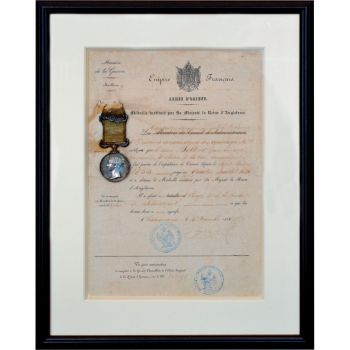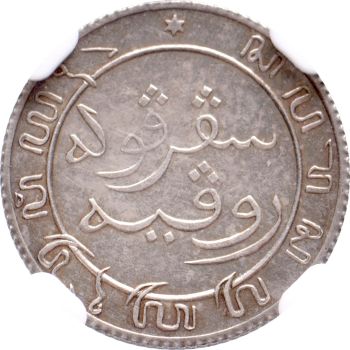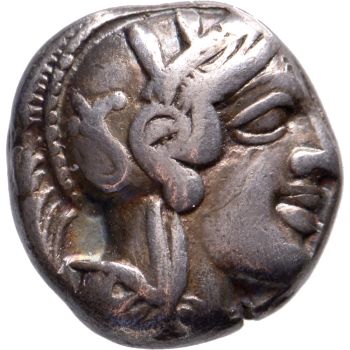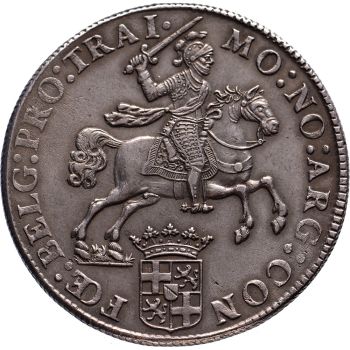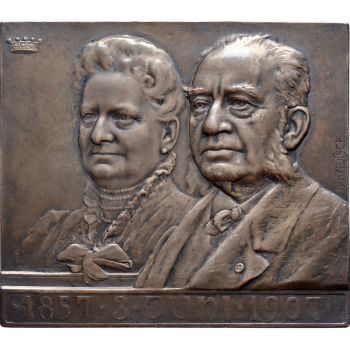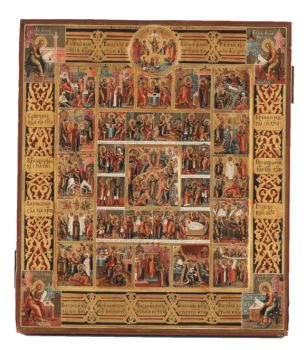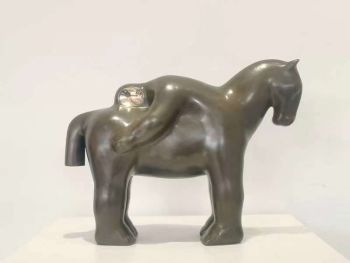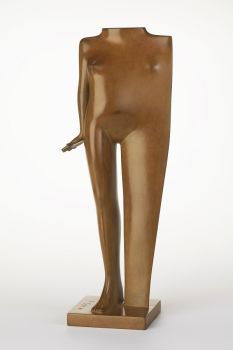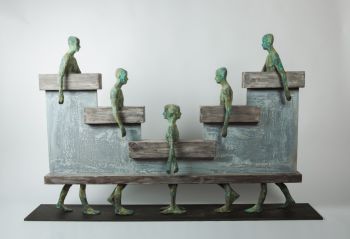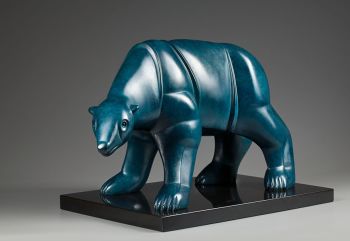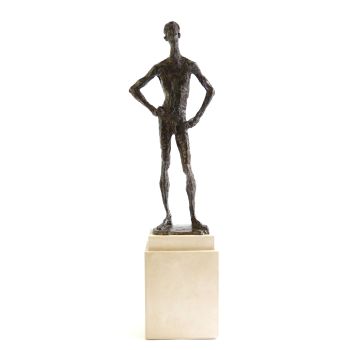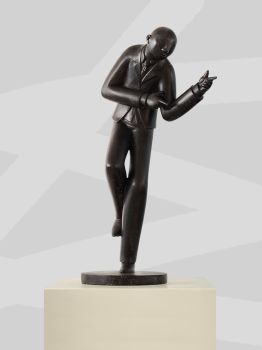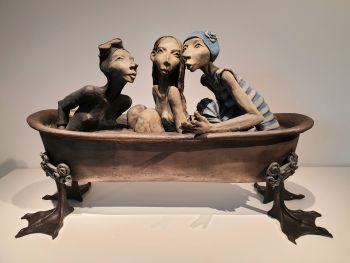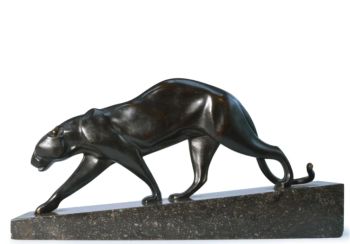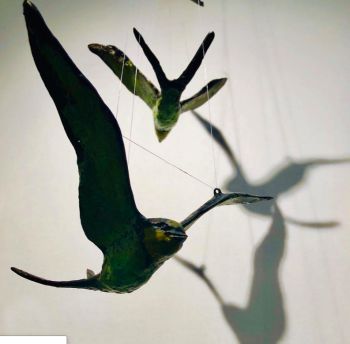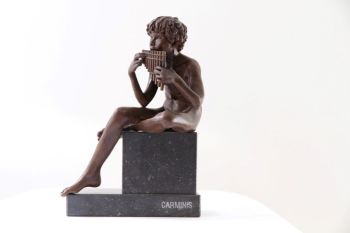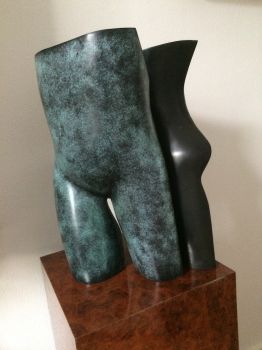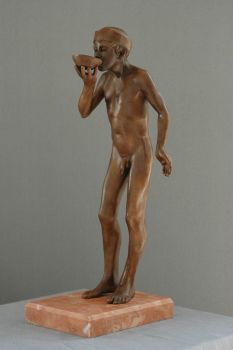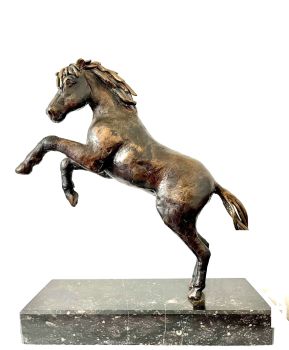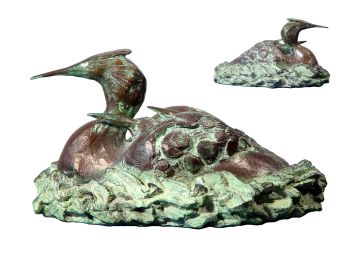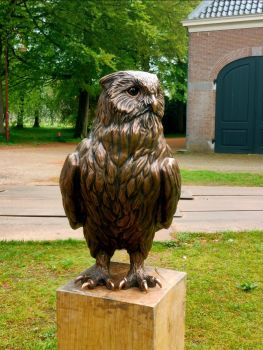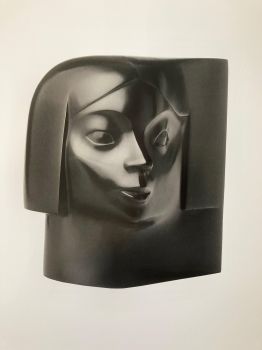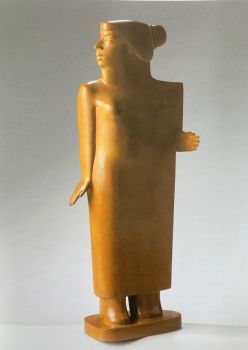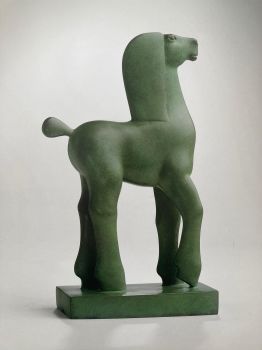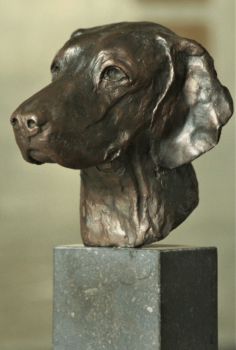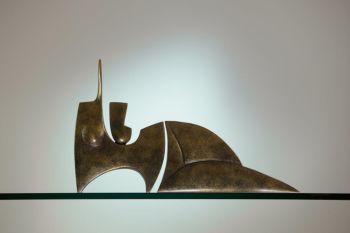A large Empire Center Piece, Paris 1810
Artista Desconocido
BronceMetal
48 ⨯ 33 ⨯ 27 cm
Actualmente no disponible a través de Gallerease
- Sobre la obra de arteA very large center piece in gilt and patinated bronze consisting of two patinated bronze putti on a oval shaped gilt bronze plinth on four oblate feet. The top of the plinth is decorated with a rosette of stylized acanthus leaves and a pommegranate centre. The putti carry an open work oval basket with stylized palmets and rope-shaped bars. The upper and lower rim are decorated with stylized floral motif. The underside of the basket consists of a patinated bronze plaque ornamented with gilt bronze palmettes and a glyphed boss decorated with leaves.
This magnificent centrepiece was almost certainly made as part of a ‘surtout de table’, an elaborate dining service, which in the early nineteenth century was displayed on a long mirrored plateau in the centre of a large dining table. This type of service was developed in France during the reign of Napoleon’s rule and in the wake of his various conquests was soon adopted throughout Europe. Pierre-Philippe Thomire (1751-1843), who was elected ciseleur de l’Empereur in 1809 in recognition of his service to Napoleon, created some of the very finest and most lavish surtouts for the Emperor and members of his Imperial court.
The centrepiece was intended to hold flowers or possibly fruit or sweets. A typical complete surtout de table may have comprised 24 and even 59 pieces which would probably have included smaller flanking centrepieces, tiered bon-bon dishes and sweetmeat plates, fruit baskets, possibly vases and accompanying candelabra placed on both the mirrored plateau and around its sides. While some remain as complete sets many have inevitably been separated, not least due to the practicalities of smaller dining tables. Despite separation, individual pieces are still very highly prized. - Sobre el artista
Puede suceder que un artista o creador sea desconocido.
Algunas obras no deben determinarse por quién está hecho o por (un grupo de) artesanos. Algunos ejemplos son estatuas de la Antigüedad, muebles, espejos o firmas que no son claras o legibles, pero también algunas obras no están firmadas en absoluto.
También puedes encontrar la siguiente descripción:
•"Atribuido a …." En su opinión, probablemente una obra del artista, al menos en parte.
•“Estudio de….” o “Taller de” En su opinión, una obra ejecutada en el estudio o taller del artista, posiblemente bajo su supervisión
•“Círculo de…” En su opinión, una obra del período del artista que muestra su influencia, estrechamente asociado con el artista pero no necesariamente su alumno.
•"Estilo de …." o “Seguidor de…”. En su opinión, una obra ejecutada al estilo del artista pero no necesariamente por un alumno; puede ser contemporáneo o casi contemporáneo
•"Manera de …." En su opinión una obra al estilo del artista pero de fecha posterior
•"Después …." En su opinión, una copia (de cualquier fecha) de una obra del artista
•“Firmado…”, “Fechado…” o “Inscrito” En su opinión, la obra ha sido firmada/fechada/inscrita por el artista. La adición de un signo de interrogación indica un elemento de duda.
•“Con firma…”, “Con fecha…”, “Con inscripción…” o “Lleva firma/fecha/inscripción” en su opinión la firma/fecha/inscripción ha sido añadida por alguien que no es el artista
Artwork details
Related artworks
Artista Desconocido
Icono ruso que representa una Deesis extendida1600 - 1650
Precio a consultarKunsthandel H.W.C. Dullaert Icons
1 - 4 / 12Artista Desconocido
Set Franse Empire Pendules / Empire Lectura penduleearly 19th
Precio a consultarKuipers Kunst & Antiek
Artista Desconocido
Set of eight gouache drawings1799 - 1801
Precio a consultarRobert Schreuder Antiquair
Artista Desconocido
Pulseira de diamante do século 18 com entalhes de 2.000 anos1790
€ 23.000Adin Fine Antique Jewellery
 curada por
curada porDanny Bree
1 - 4 / 15Artista Desconocido
Japanese art deco lacquervase with Scarab beetle motif1920 - 1950
Precio a consultarDille Art
Artista Desconocido
UN TOCADO DE PLUMAS TRIBU JURUNA1900 - 1950
Precio a consultarZebregs & Röell - Fine Art - Antiques
Artista Desconocido
Japanese art deco lacquervase with Scarab beetle motif1920 - 1950
Precio a consultarDille Art
Artista Desconocido
UITGEBREIDE FEESTDAGENIKOON MET PASSIECYCLUS19th century
Precio a consultarHeutink Ikonen
1 - 4 / 24- 1 - 4 / 24

